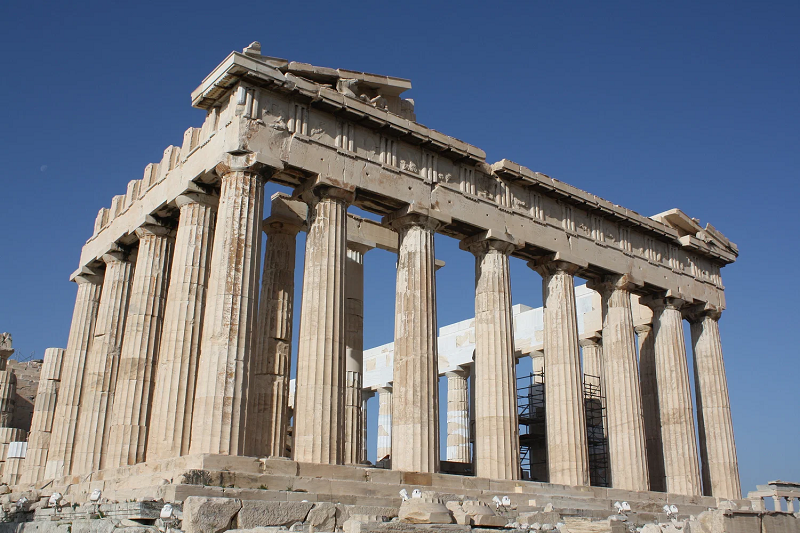ISABEL RUBIO ARROYO | Tungsteno
The Parthenon has withstood bombardment, occupation, neglect, vandalism and even earthquakes. Over the centuries, this Greek temple located on the Acropolis of Athens has become a priceless heritage, revealing the sophisticated construction methods used in its creation. We investigate how this 5th century BC structure was built and how it still stands today.
The secrets of the Parthenon
Construction of the Parthenon began in 447 BC to honour Athena, the goddess of wisdom and war. The builders mined 100,000 tonnes of marble from a quarry about 16 kilometres from Athens. Wagons were used to transport the blocks, which were carved and trimmed by hand on-site with great precision. It is believed that they used a system of pulleys, ropes and wooden cranes to pull and lift the marble blocks. The structure was built in just 9 years.
Although it is considered one of the crowning achievements of the Doric order, one of the most representative architectural styles of classical Greece, it also incorporates some Ionic elements. At first sight, the Parthenon is striking in its perfection. Its lines, symmetrical columns and imposing structure convey a sense of balance and harmony. But behind this facade of perfection lies a fascinating secret: the Parthenon is not as straight as it seems.
Construction of the Parthenon began in 447 BC to honour the warrior goddess Athena. Credit: TED-Ed
A subtle and deliberate curvature
In fact, it is characterised by slight curvatures, starting from the foundation and rising along the steps, the colonnade and even the roof. To achieve this effect, the Parthenon’s architects used ingenious techniques, such as bevelling or angling the blocks of the steps, tilting the columns slightly inwards, and making the corner columns thicker.
“A building as large as the Parthenon that was perfectly straight, with perfect horizontals and perfect verticals, would appear less interesting visually than a building that has these deviations, which are at first sensed rather than actually seen or experienced,” Jeffrey Hurwit, professor emeritus of art history and classics at the University of Oregon and author of The Athenian Acropolis, tells the History Channel. The Parthenon “is a building, but it's [also] almost a sculpture.”
The Greeks applied subtle architectural techniques to create an illusion of visual perfection. Credit: History
Extraordinary earthquake resistance
If the Parthenon is remarkable for anything, it is how it has stood the test of time for more than two millennia. In 426 BC, an earthquake struck Athens with great force. Although the Parthenon's columns shifted slightly, its structure remained intact. A group of engineers at a workshop on the Acropolis concluded that the modular columns of the Parthenon were deliberately designed to have excellent seismic properties.
Scientists from around the world have investigated the seismic resistance of the Parthenon. This structure was built on natural bedrock, which gives it a solid and stable foundation. In addition, its columns are not solid blocks, but are composed of perfectly carved and joined “slices” and there are metallic joints between the layers of marble, bonded with lead, which act as shock absorbers.
The Parthenon is still standing despite suffering several earthquakes. Credit: AP Archive
The metamorphosis of the Parthenon
Originally conceived as a temple dedicated to the goddess Athena, the Parthenon later morphed into a Byzantine church, a Roman Catholic cathedral and a mosque. It did not become a ruin until 1687. In the midst of the war between the Venetians and the Ottomans for control of the Acropolis, a fateful event marked the history of the Parthenon forever. During the Venetian bombardment, an explosion occurred inside the temple, destroying the centre of the building.
Subsequent restorations caused further damage. In 1975, an elaborate, decades-long restoration began. Every salvageable piece of marble was returned to its original position and the gaps were filled with marble from the same quarry used by the ancient Athenians. The project took more than 40 years. Today, the Parthenon attracts visitors from around the world. As well as being one of Greece's most popular tourist destinations, it is a symbol of resilience and timeless beauty.
Tungsteno is a journalism laboratory to scan the essence of innovation.
